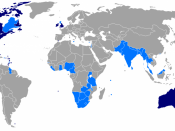Originally, common law was customary law, folk law, based on precedent. There was of course statutory law -- the king's law -- but common law guided how it was enforced and administered. No real common law exists today, having been entirely codified as statutory law throughout the English-speaking world. There remains, however, what are sometimes termed common law rights.
Now and again, a new situation arises where there is no law to guide a judge, but where there really is something to adjudicate. One case I recall (from the 70?) involved a common law right to sunshine for solar panels; a homeowner had installed such panels, but a neighbor subsequently built a fence or structure which blocked the sun's rays. The guy was adjudged to have a common law right to the sunshine, more or less on old common law water-rights law and the neighbor lost. This particular case involved equity as well.
Equity came into play when there was no precedent for the case at hand. This happens even today. If there is something for the court to adjudicate, but no guiding precedent or statute to guide how the case is to be decided, the judge (perhaps through a jury) creates a new precedent based on what is fair and equitable. This is a very common sense legal doctrine.
A system of jurisprudence supplementing and serving to modify the rigor of common law.
History of the common law
Common law originally developed under the inquisitorial system in England from judicial decisions that were based in tradition, custom, and precedent. Such forms of legal institutions and culture bear resemblance to those which existed historically in continental Europe and other societies where precedent and custom have at times played a substantial role in the legal process, including Germanic law recorded in...


